Laser Cut Triceratops
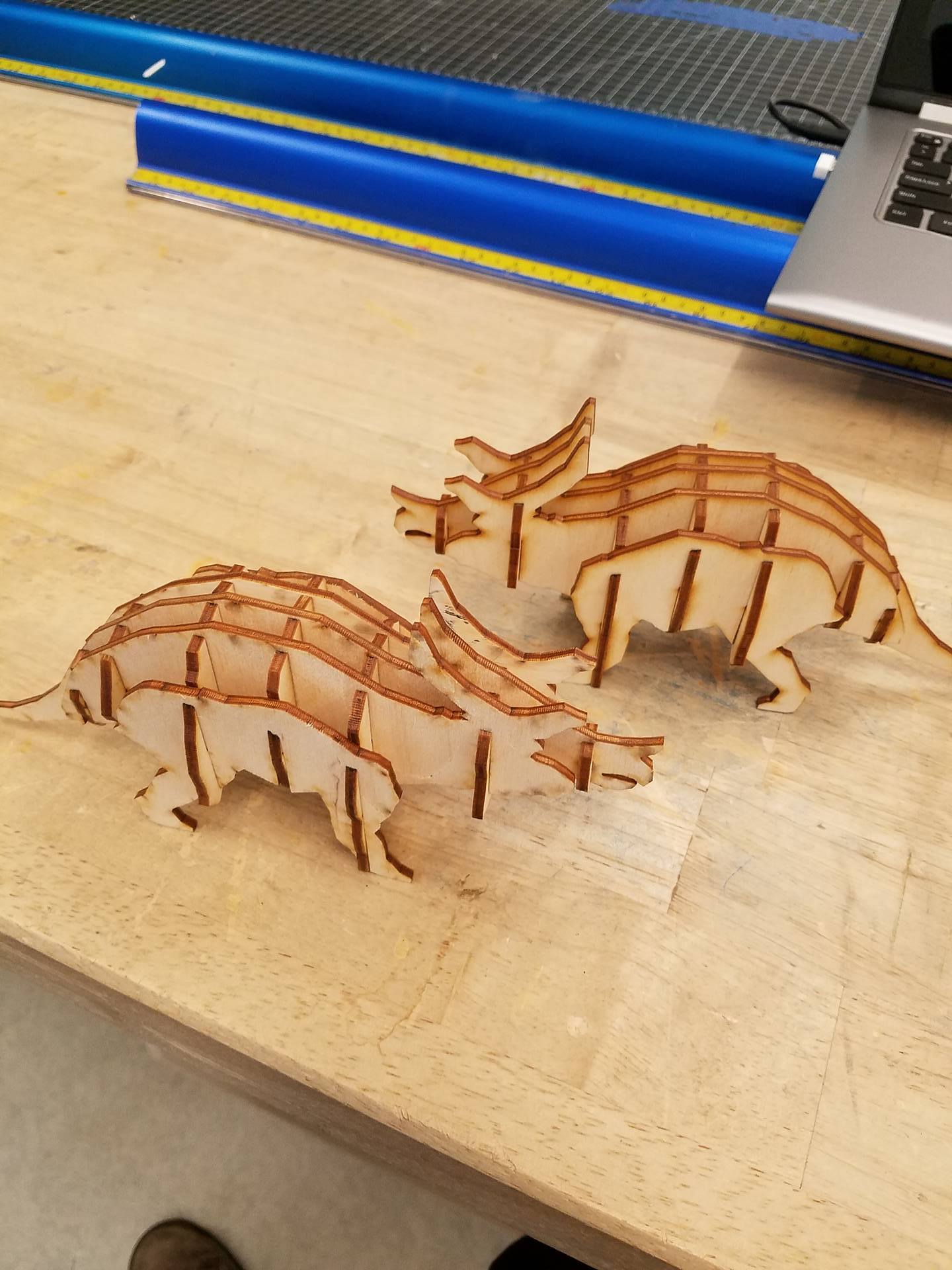
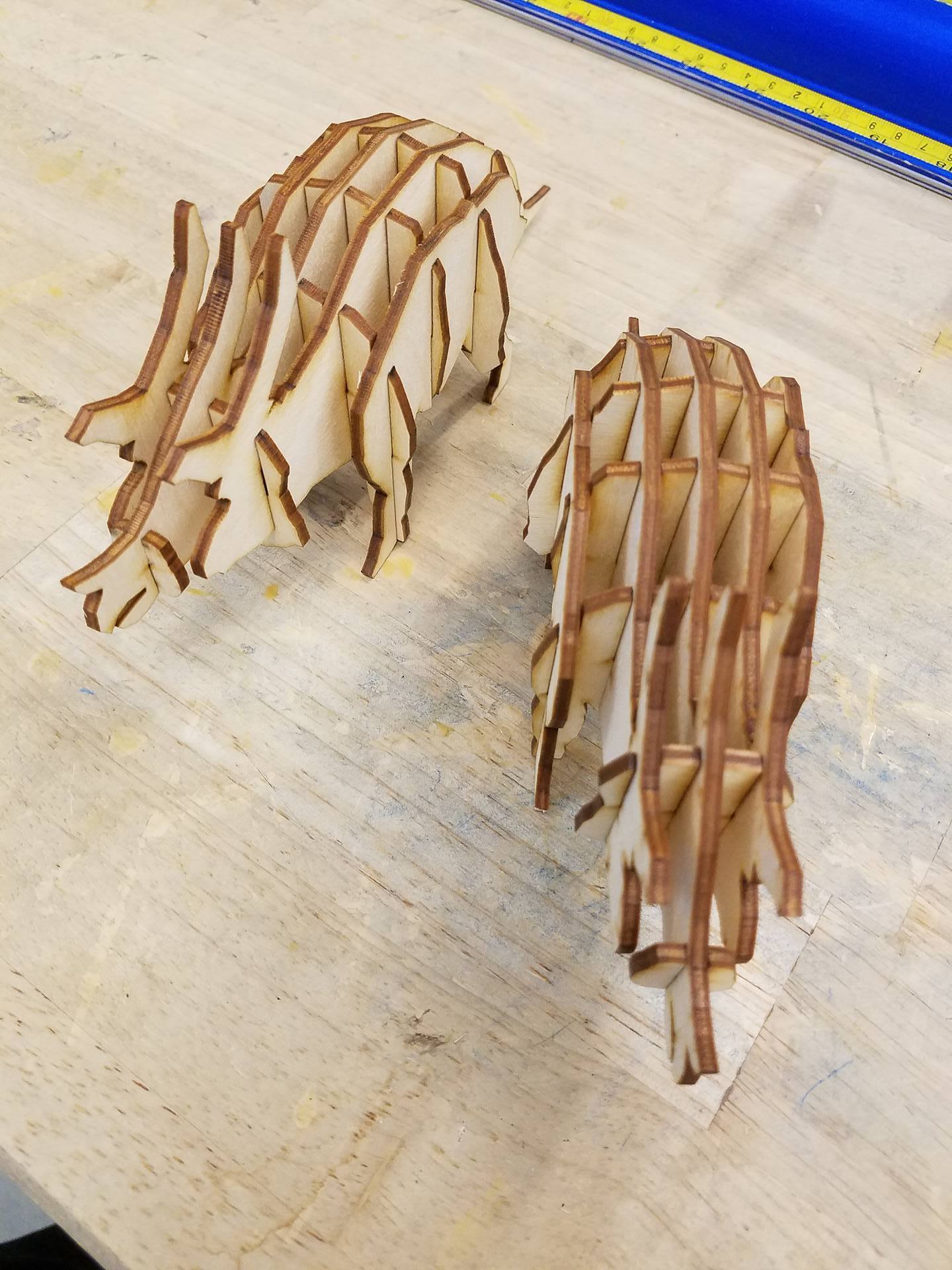
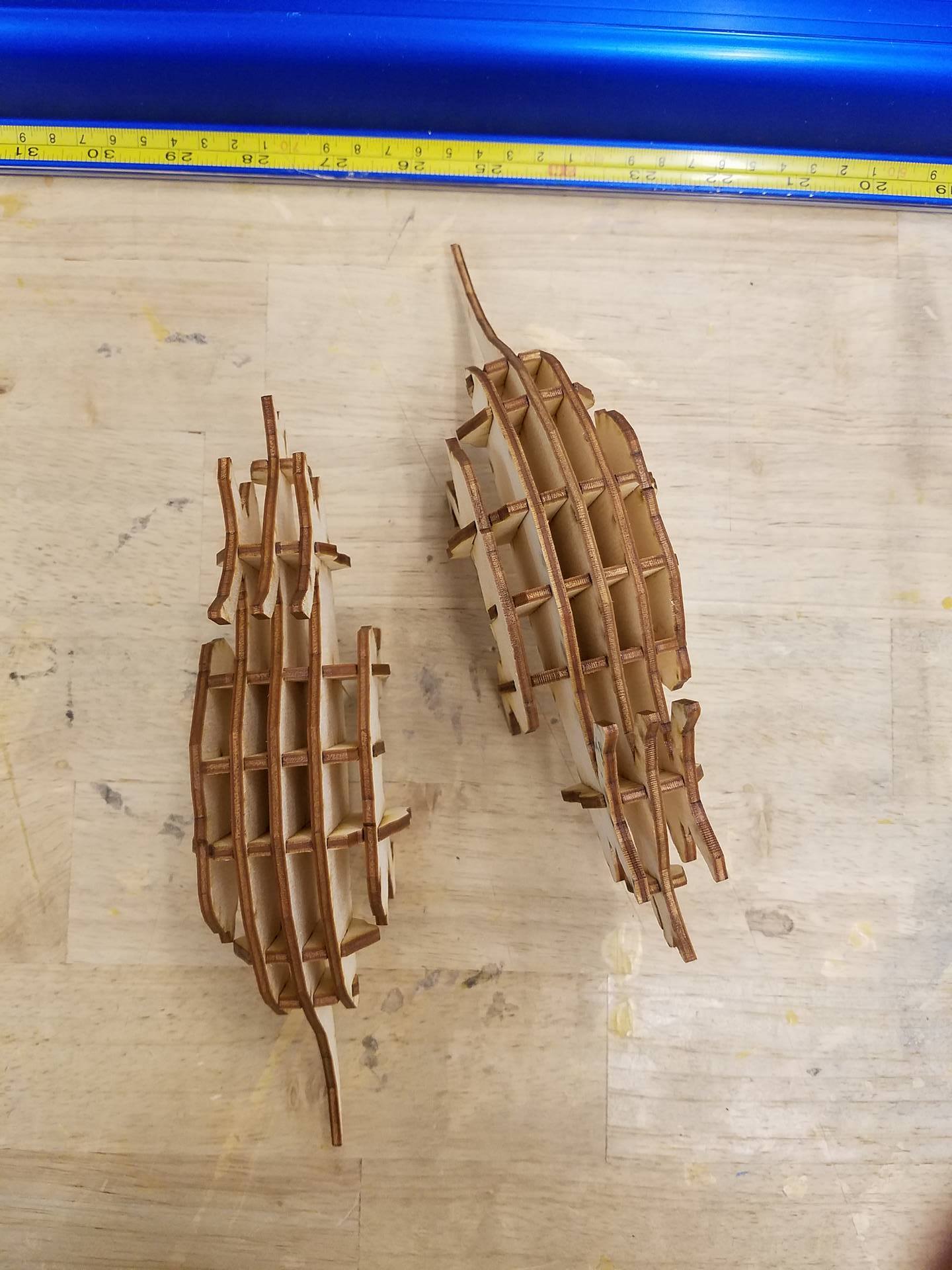
In this tutorial, we will be making a 3D triceratops model out of 2D pieces. Please download the attached file 'triceratops v2' (both the .ai and .pdf file work).
First, I would like to give credit to RileyJackson from thingiverse for the CAD model of the triceratopsI used to make the design. It can be found here: https://www.thingiverse.com/thing:2288923
Also, shout out to Jason Poel Smith who had the idea to do a dinosaur model.
The CAD model of the triceratops was 'waffle-ized' using a software called 123D Make, for those of you interested in making similar projects. It is a free software by Autodesk that can be downloaded here: http://autodesk-123d-make.en.lo4d.com/
**Edit: By a user request, I have added the file "Giant Triceratops". This file is a design for a massive dino that is 6' in length and needs 2 sheets of 4'x8' plywood, .75" thick. You will need a very powerful laser to make this one, or a lot of patience and skill with a scroll saw. Good luck on your project Weekend-Warrior!
Required tools:
CNC Laser Cutter
Calipers
Required materials:
A piece of plywood, (dimensions are dependent on thickness, see step 1)
Files:
Prepping the File
I chose to use a piece of scrap plywood that measured ~.130" thick. It's important to note that the thickness of your plywood will dictate the size of the dinosaur. If the thickness doesn't match up with the size, the slots will either be too small or too big for the pieces to fit together.
The file I provided is meant for plywood that is .120" thick. I chose plywood that is .130" thick to demonstrate how to accomodate different sized wood. The entire design file will need to be scaled by: (x/.120) * 100, where x is your material thickness. Since I am using wood that is .130" thick, my scale factor will be .130/.120 * 100 = 108.3 %. This is a critical step, otherwise your pieces will not fit together.
The method for scaling will vary based on the software you are using. In illustrator, select everything and go to object-->transform-->scale. If you are using a different software with a different laser, I will assume you know how to operate the software and scale the file.
The given file creates a triceratops that is about 8 inches long. If you want a larger model, simply choose a thicker piece of wood and scale the file accordingly.
Laser Cutting the Pieces
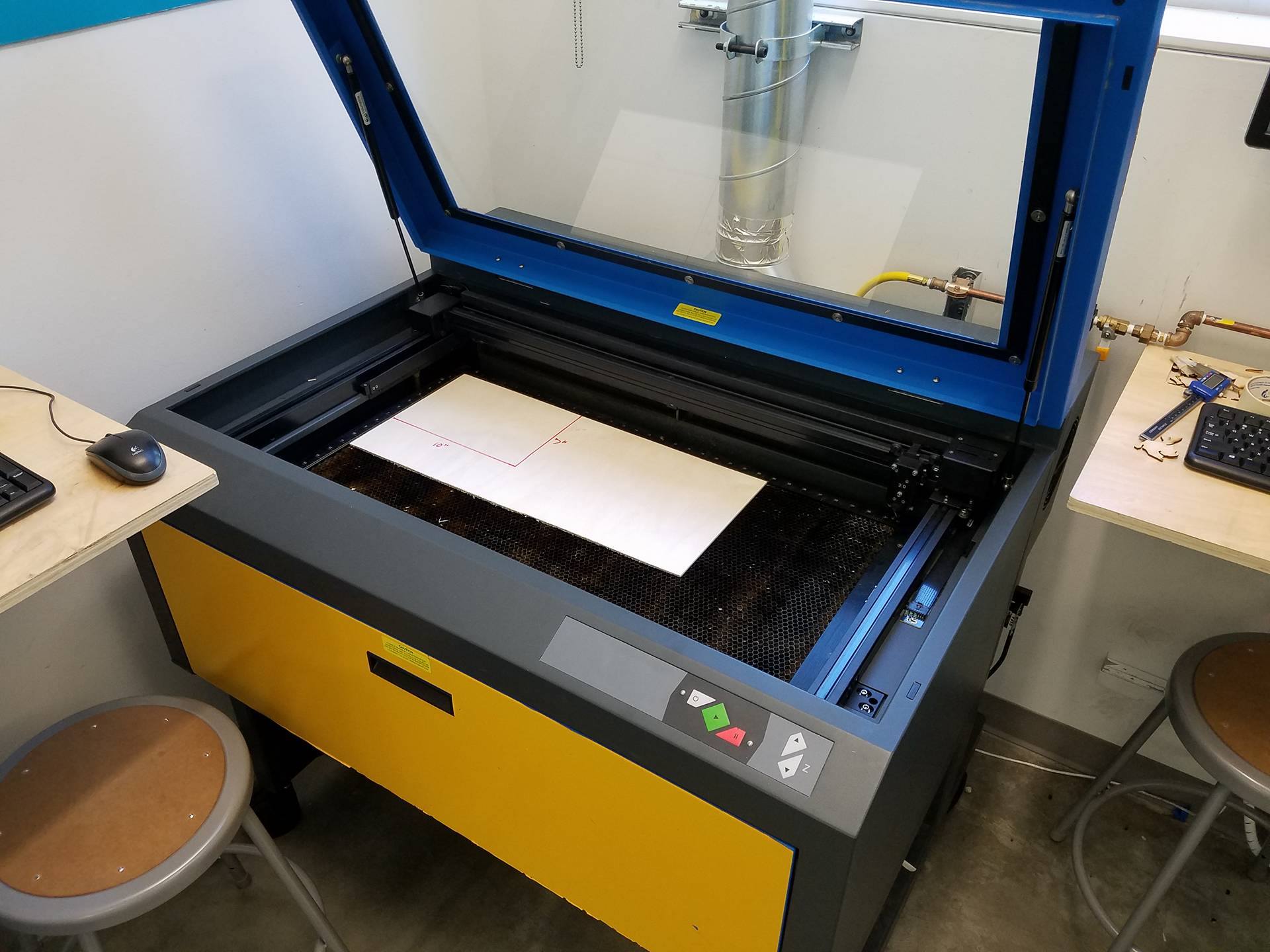
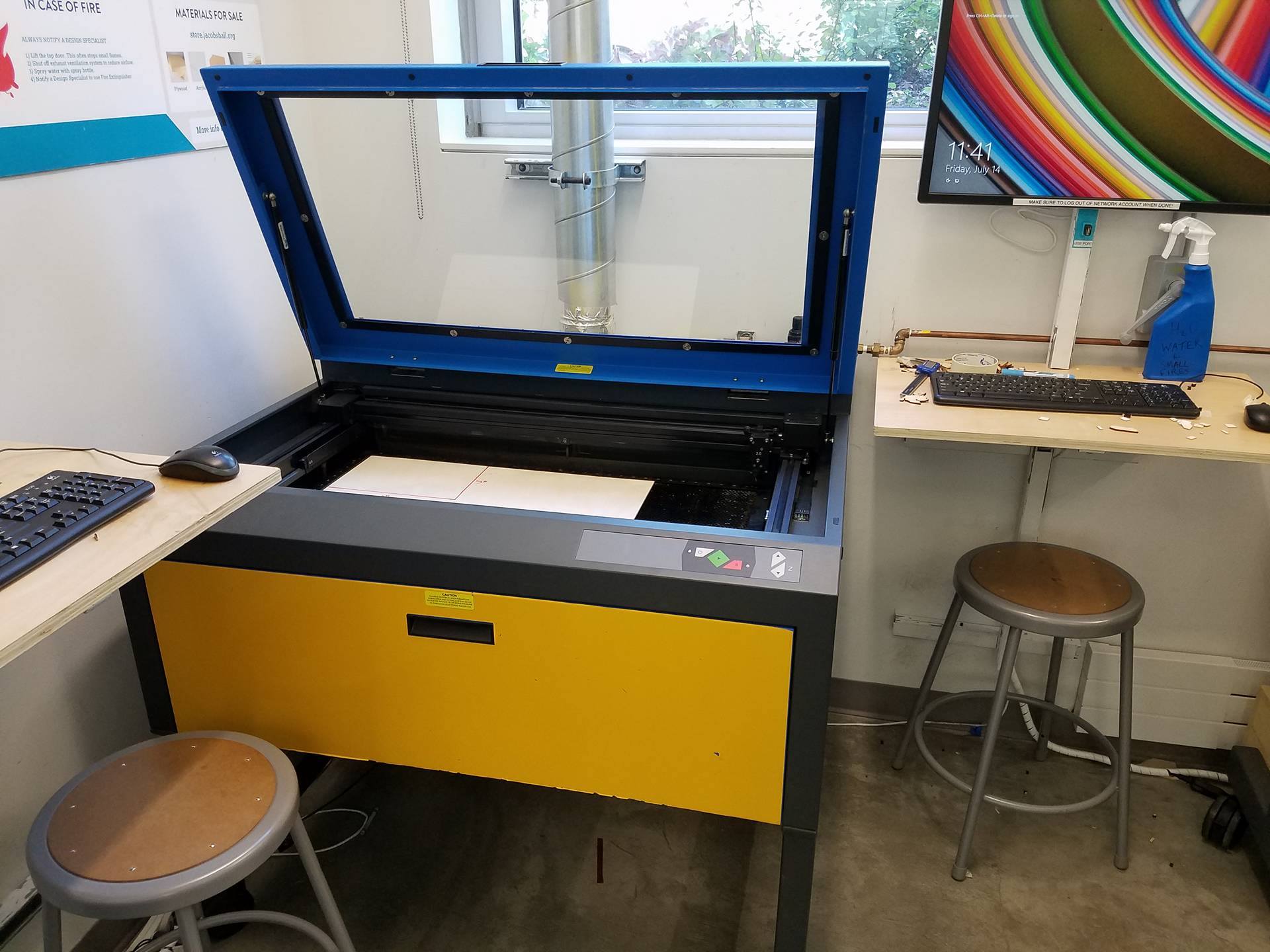
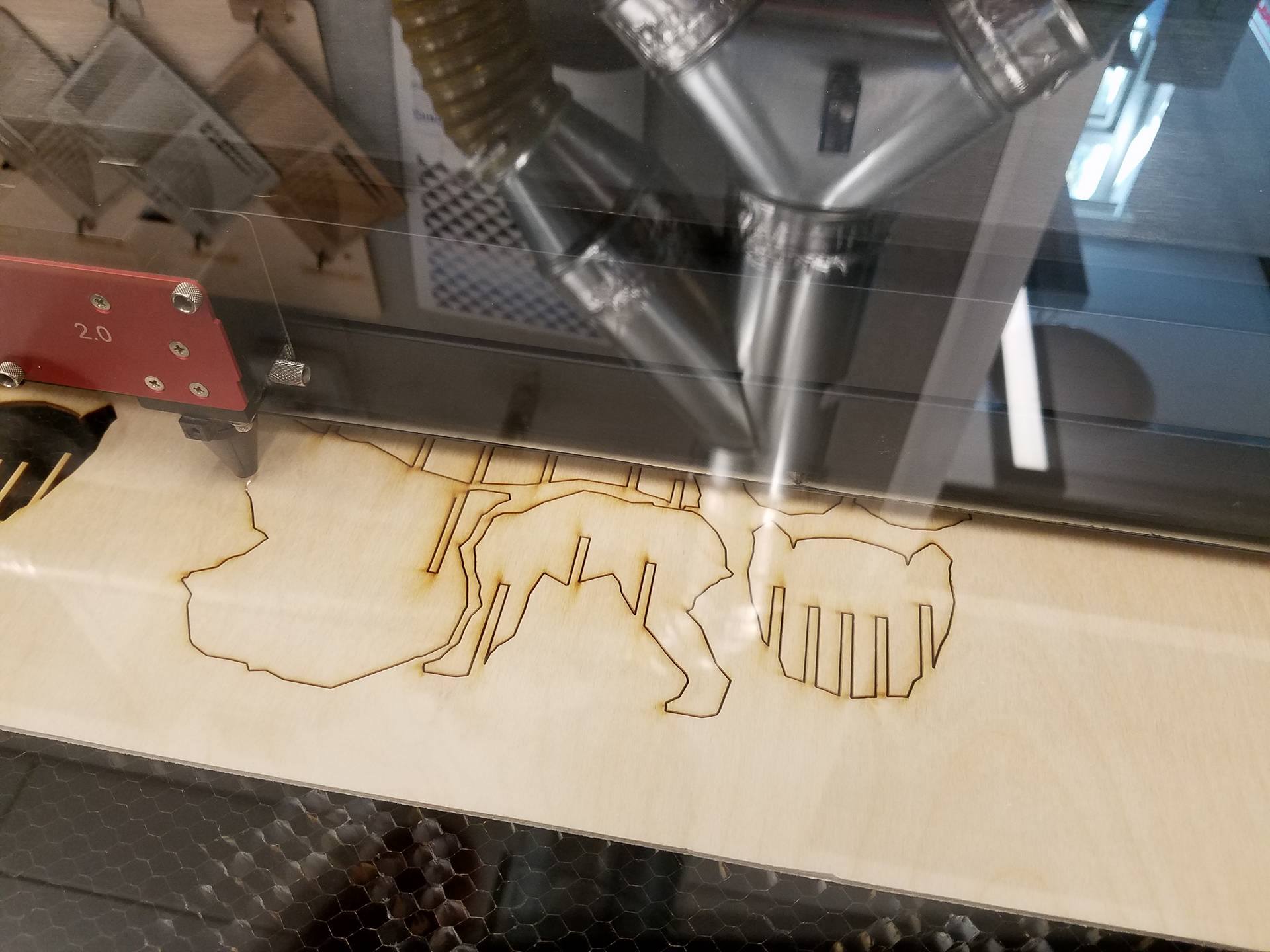
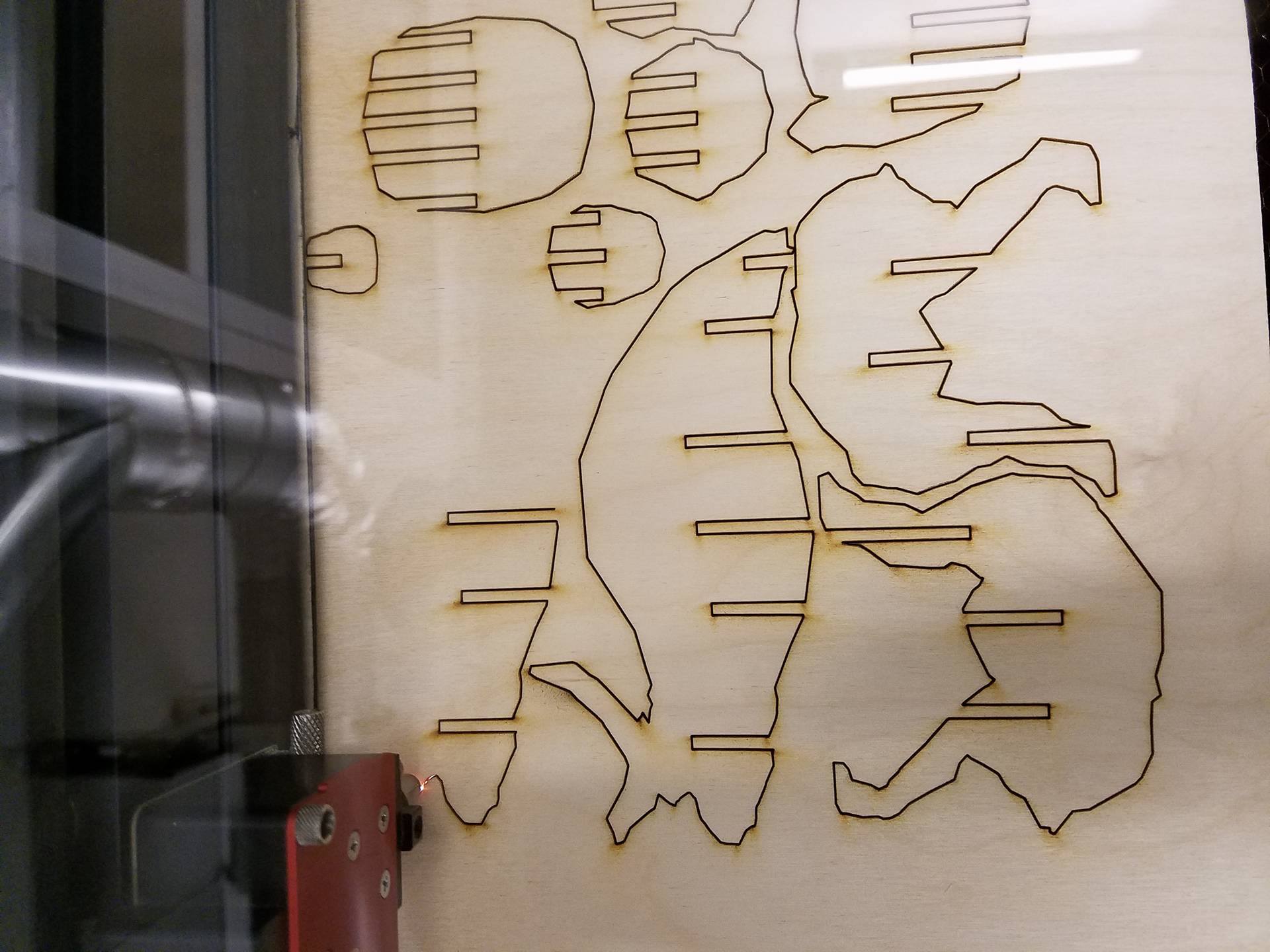
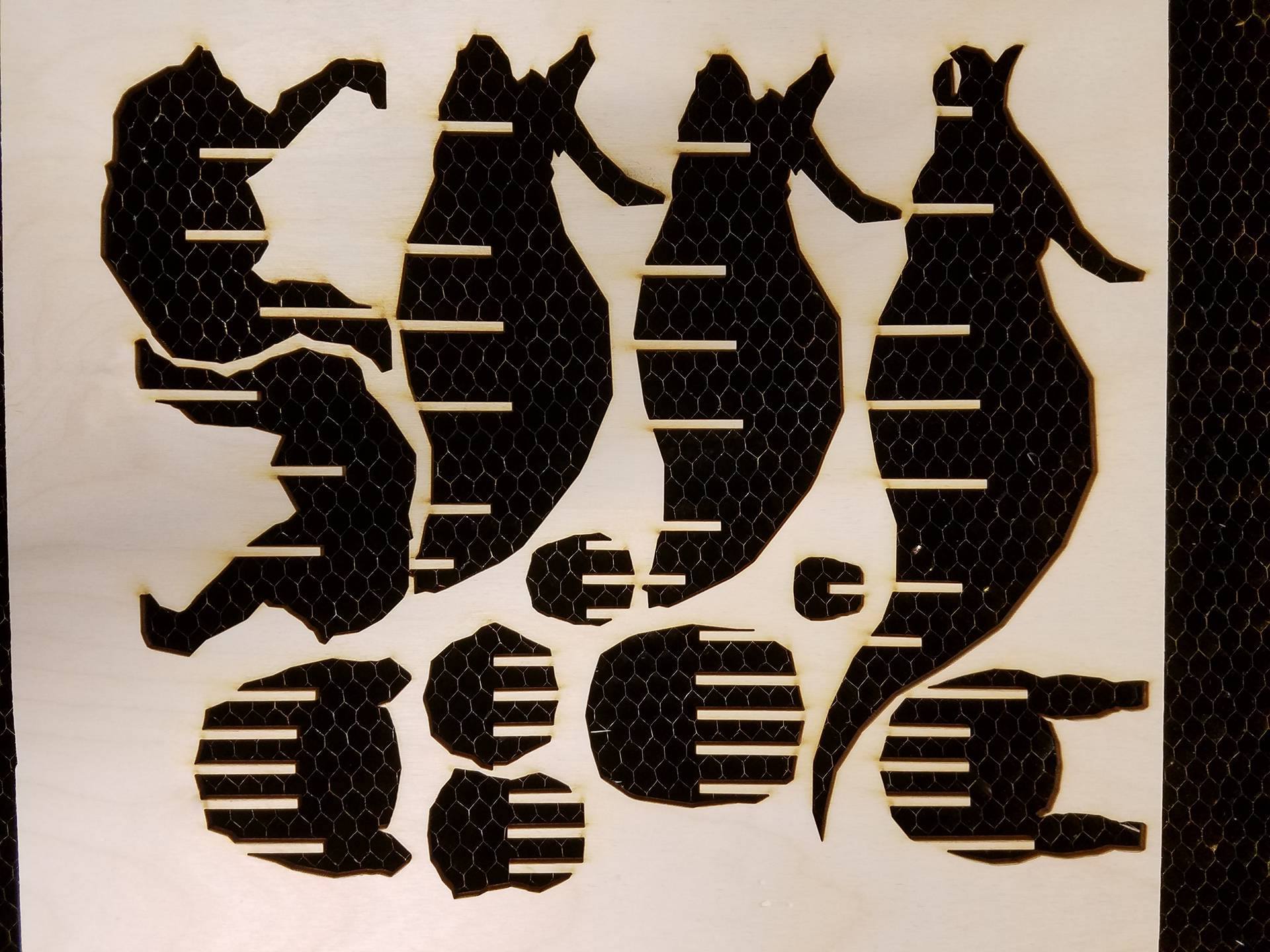
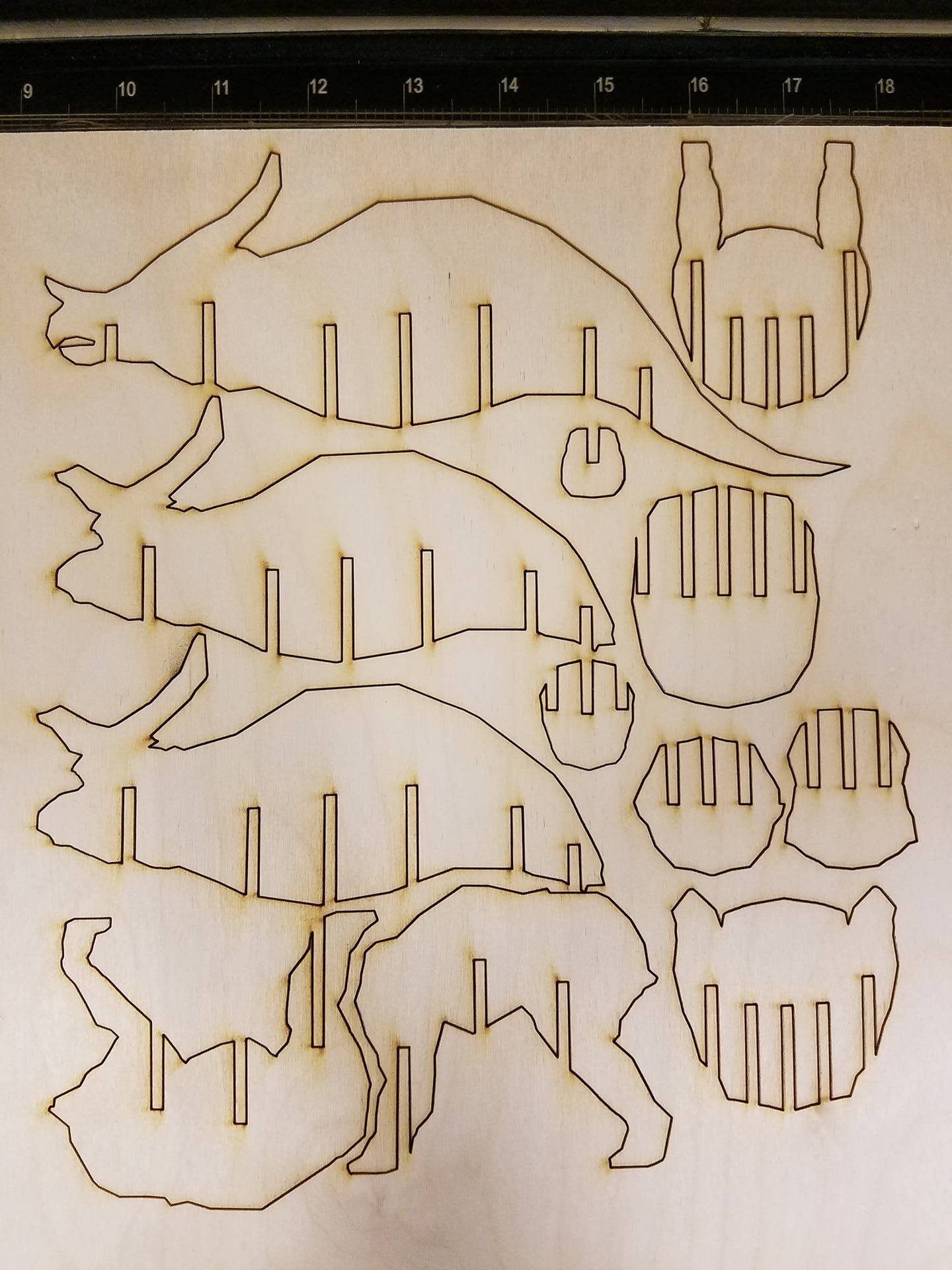
This tutorial assumes you have access to and operator's knowledge of a CNC lasercutter. As each machine's software and interface are drastically different, I'll have to assume that you know how to operate the laser cutter you will be using. The laser I used accepts illustrator files, which is why I uploaded the design as an .ai file. However, I also uploaded the .pdf for people who use a different software. Open the .pdf file in your laser's software, as pdf's are very standard file types and should be accepted by your laser's software.
Some tips: make sure you tell the laser the correct material type and correct thickness if it is autoleveling and has a materials database. If you have an older laser, make sure to focus it based on the material height and to set the power, speed, and ppi settings correctly for the plywood you are using. After your cut is done, remove the pieces and head over to a table or somewhere you can assemble them.
Assembly
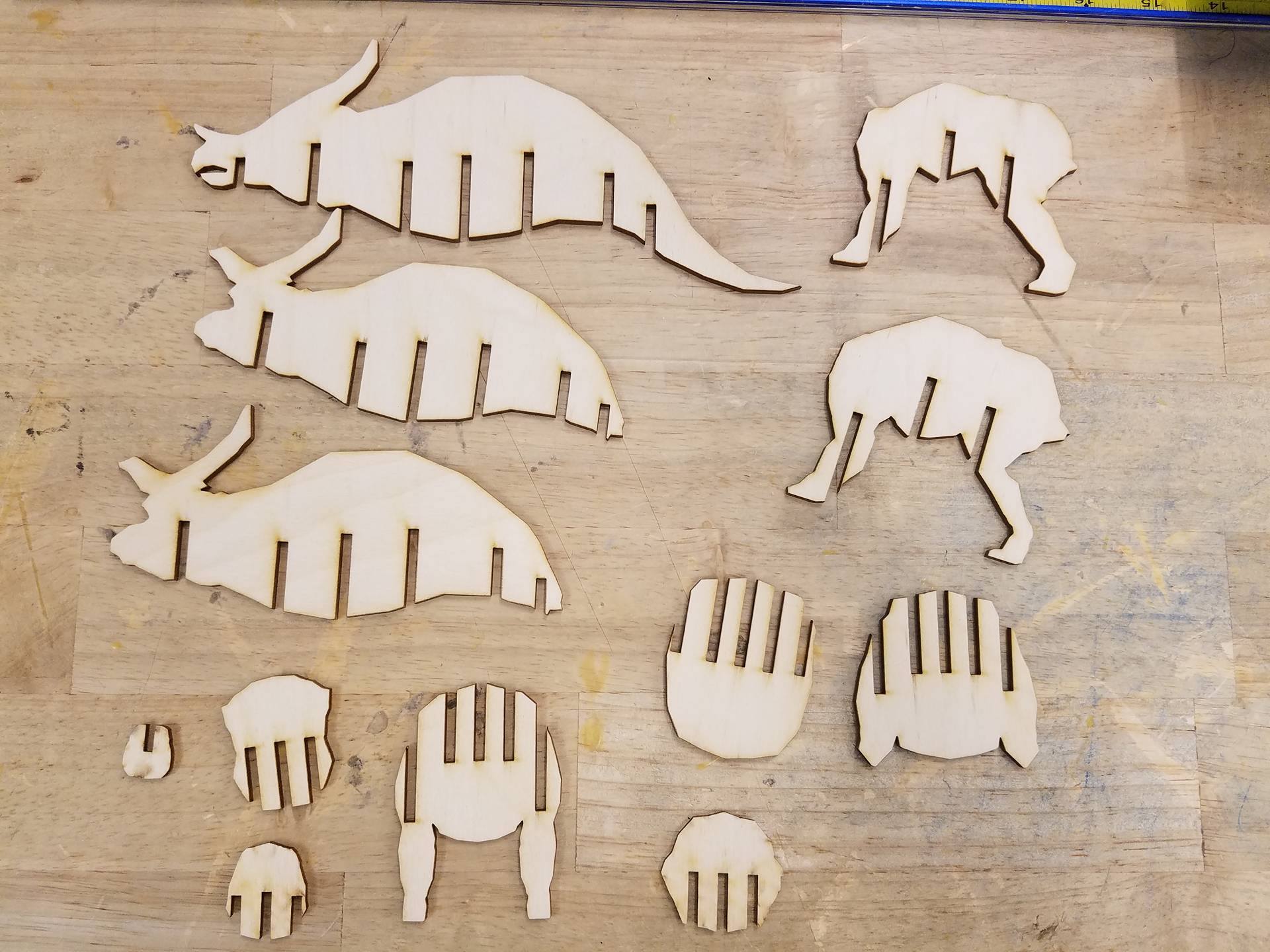
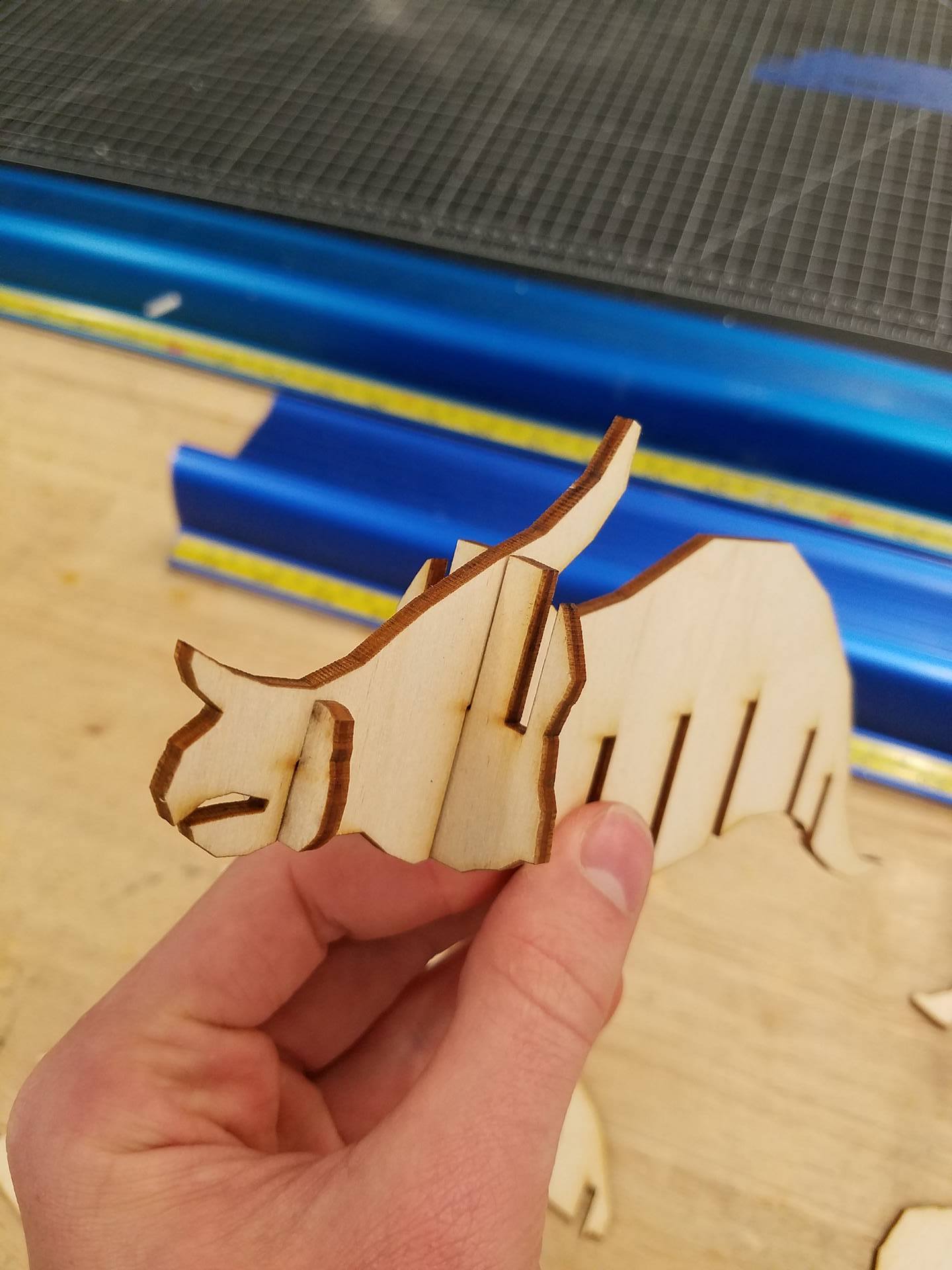

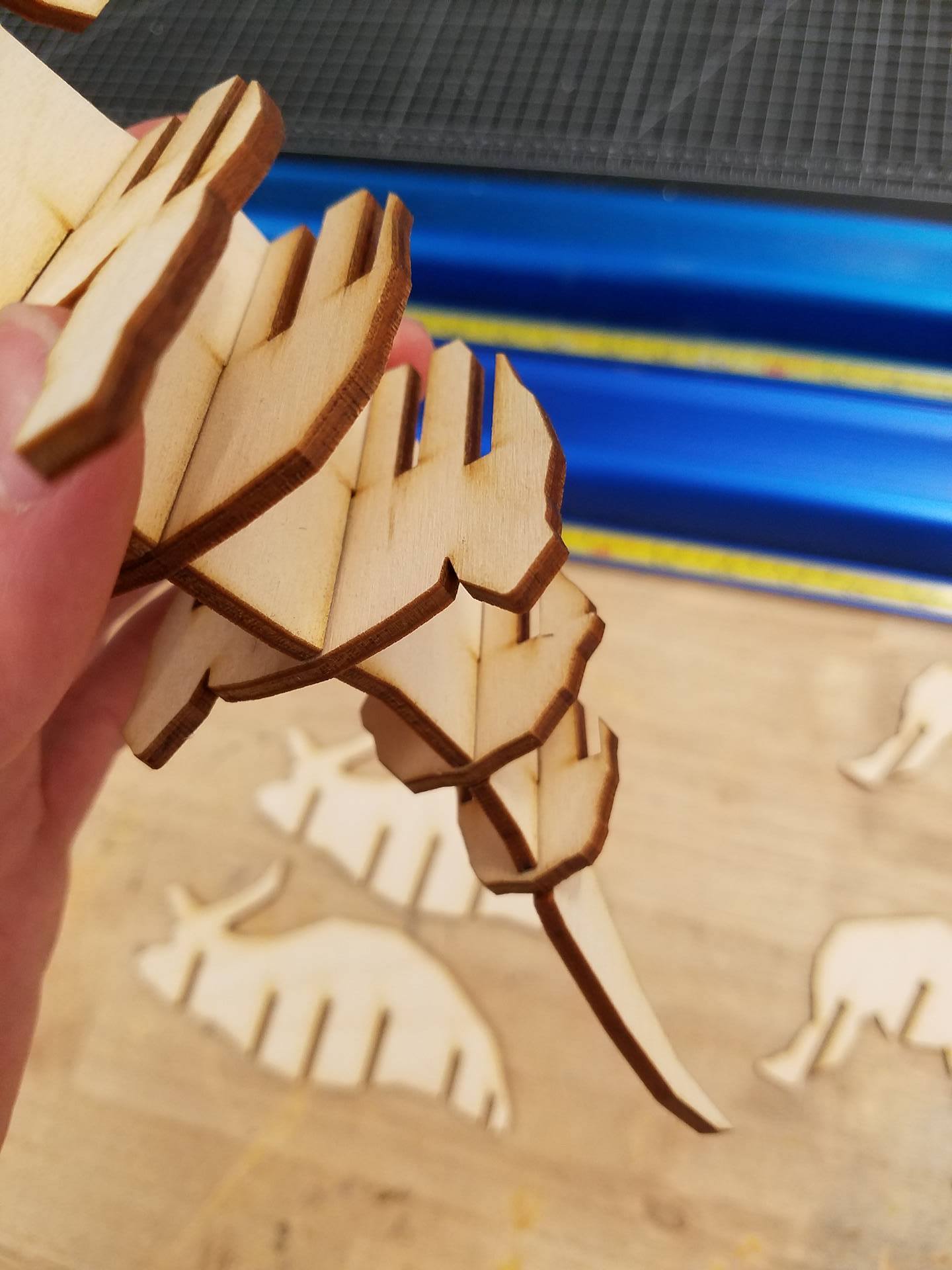
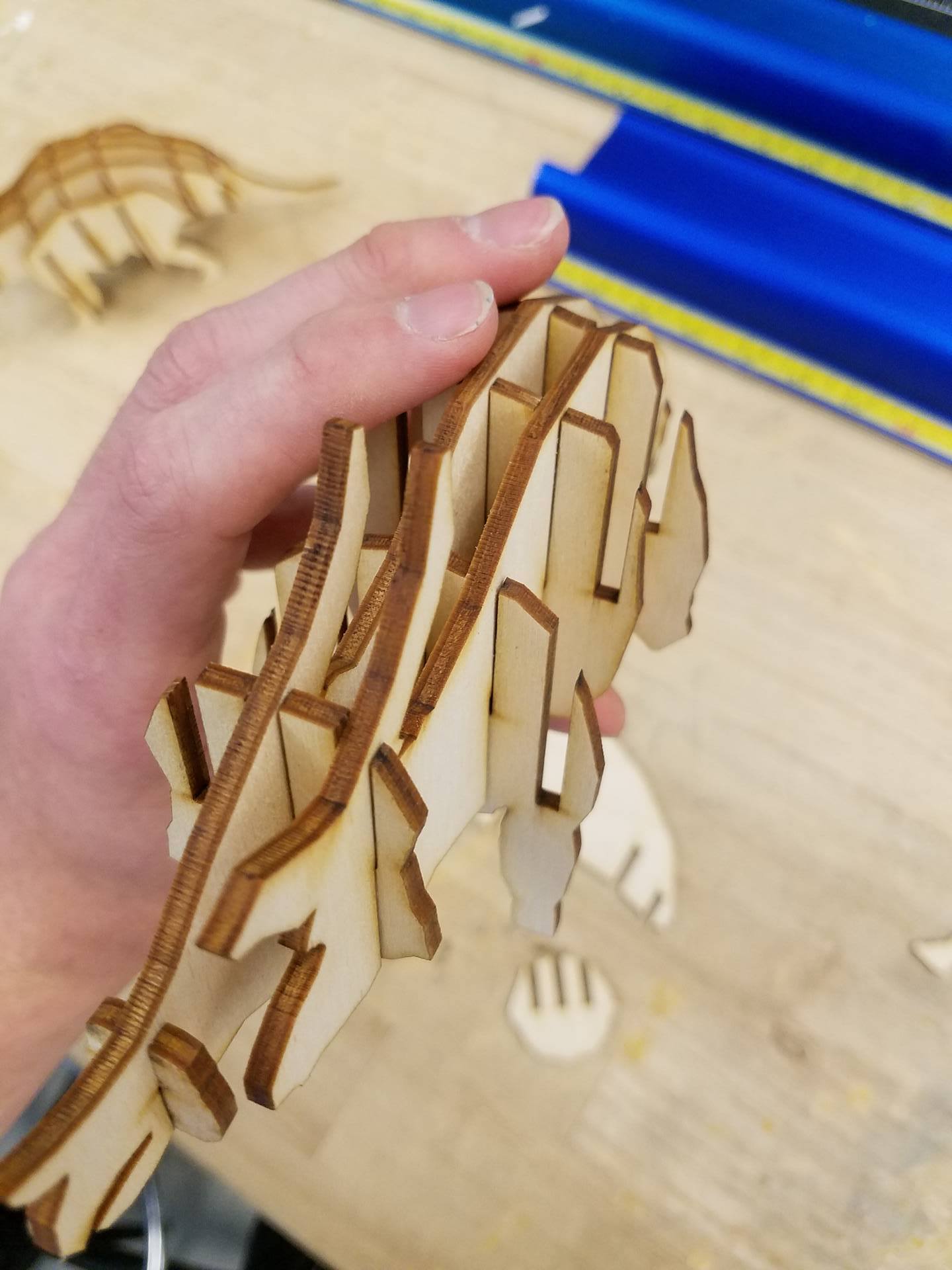
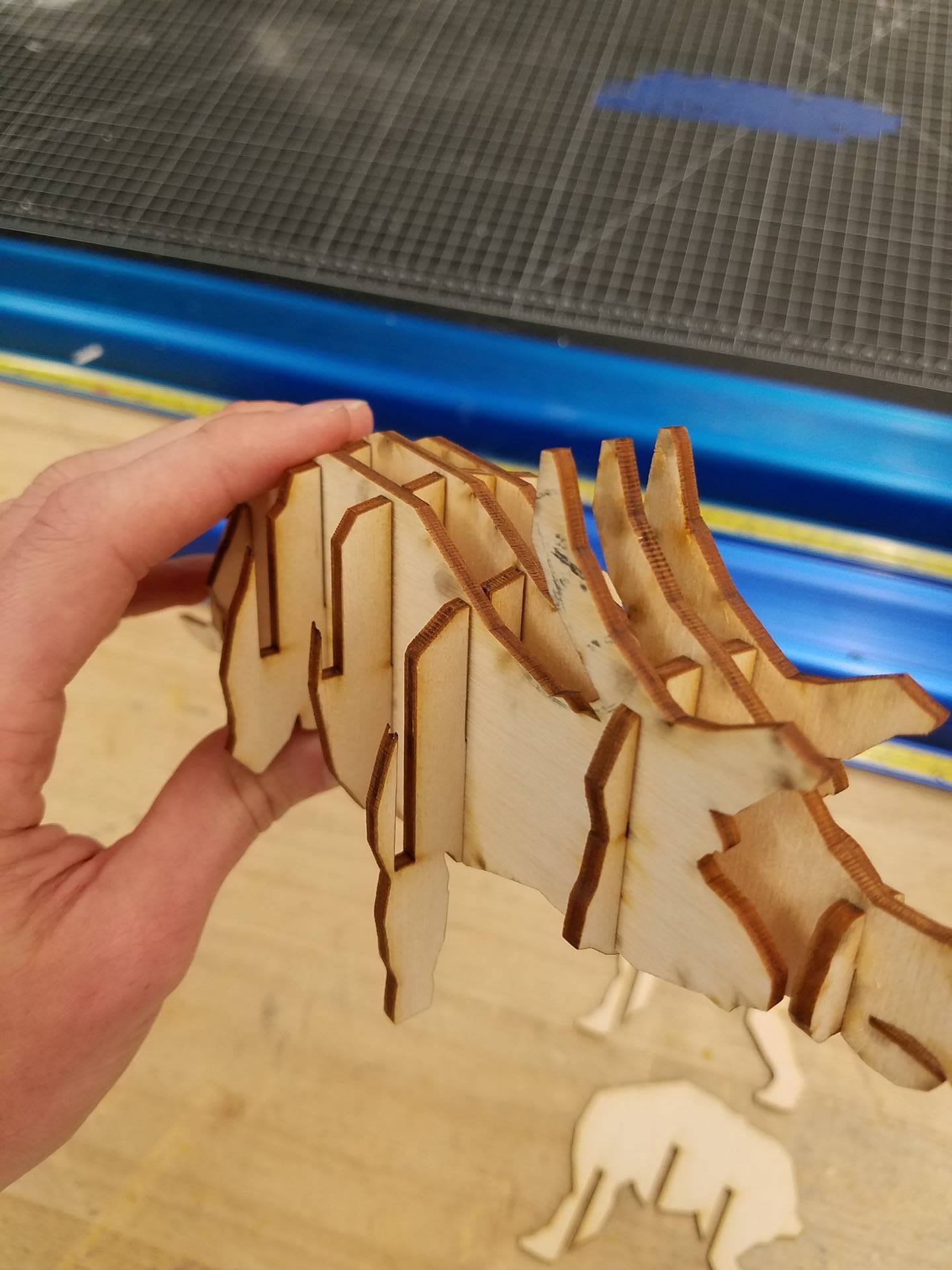
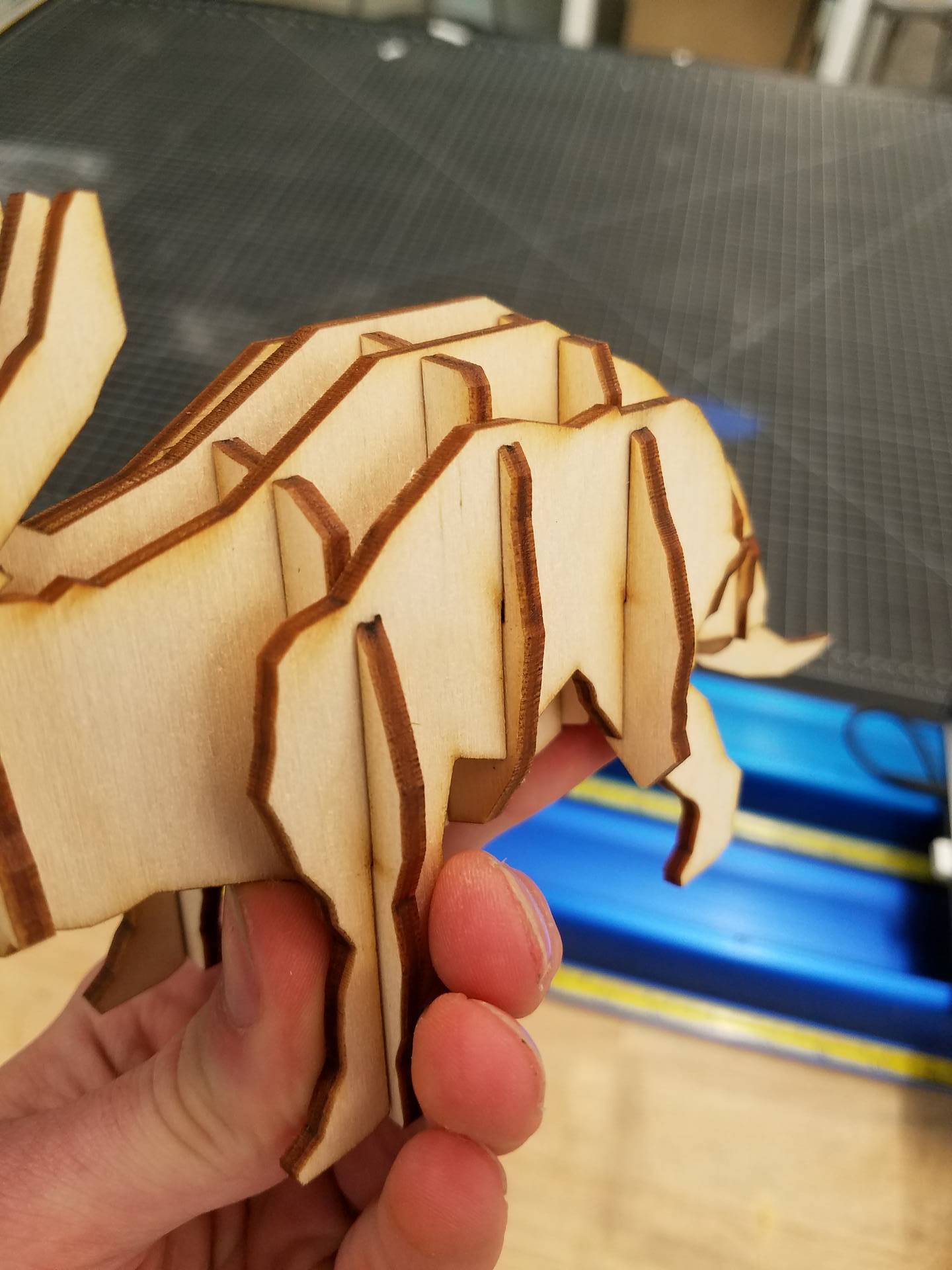
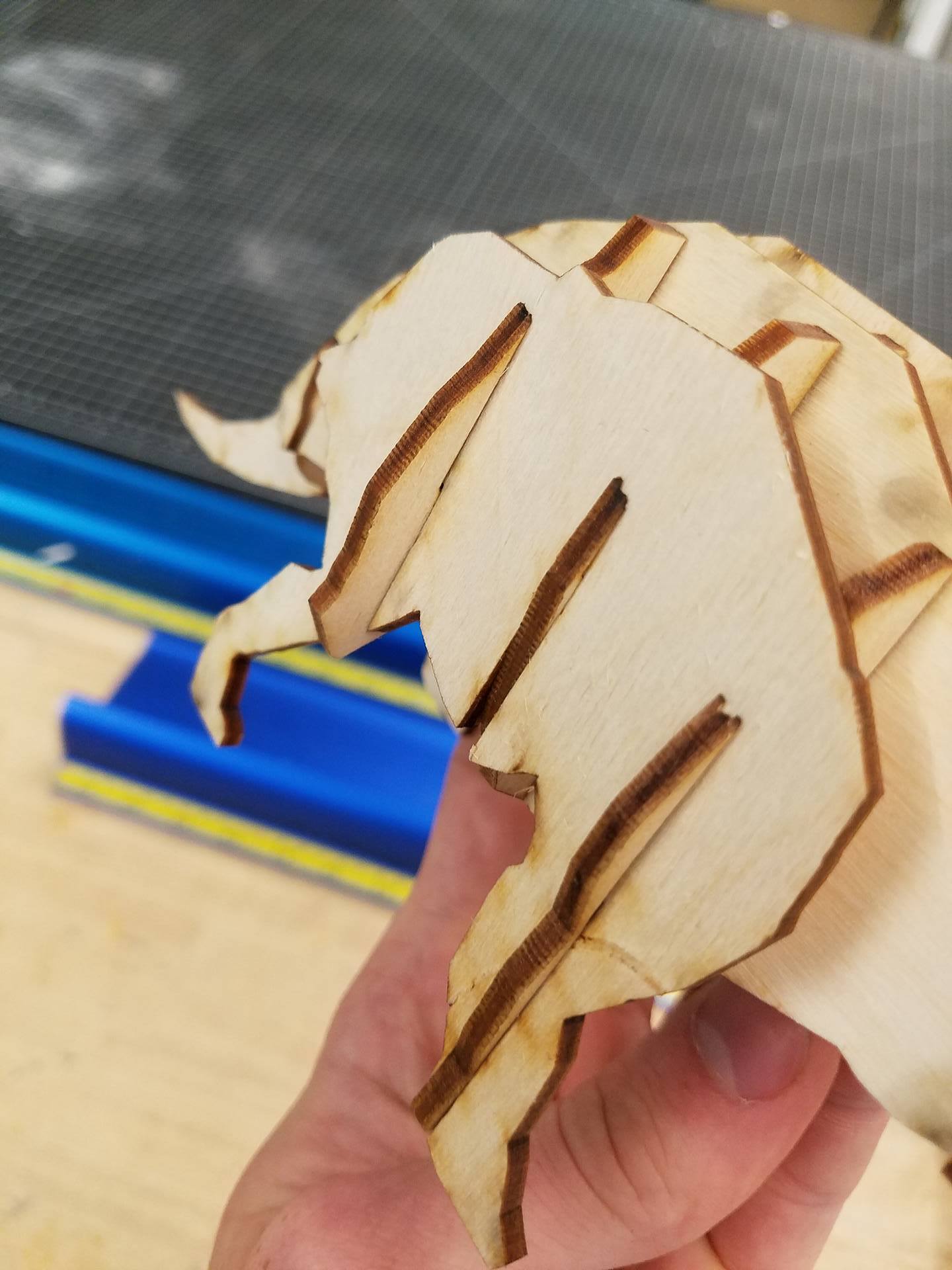
Note: Each type of laser is different, and yours may use slightly different settings than mine, resulting in a different kerf. This could make the pieces not fit together appropriately. If the pieces are too loose, consider scaling down the file by about 5% and trying again. Likewise, if the pieces are too tight and don't slide together, scale the file up by about 5% and cut the pieces again.
I found the best way to assemble the model is by starting with the 'spine', or the central long piece (its the upper left piece in the photo of all the parts laid out).
Next insert all the horizontal parts, from front to back as shown in the photos. Don't worry too much about the orientation of them, as the model is left-right symmetric.
Finally, slide in the two middle body pieces followed by the leg pieces, as depicted above.
Congrats, enjoy your dinosaur model!